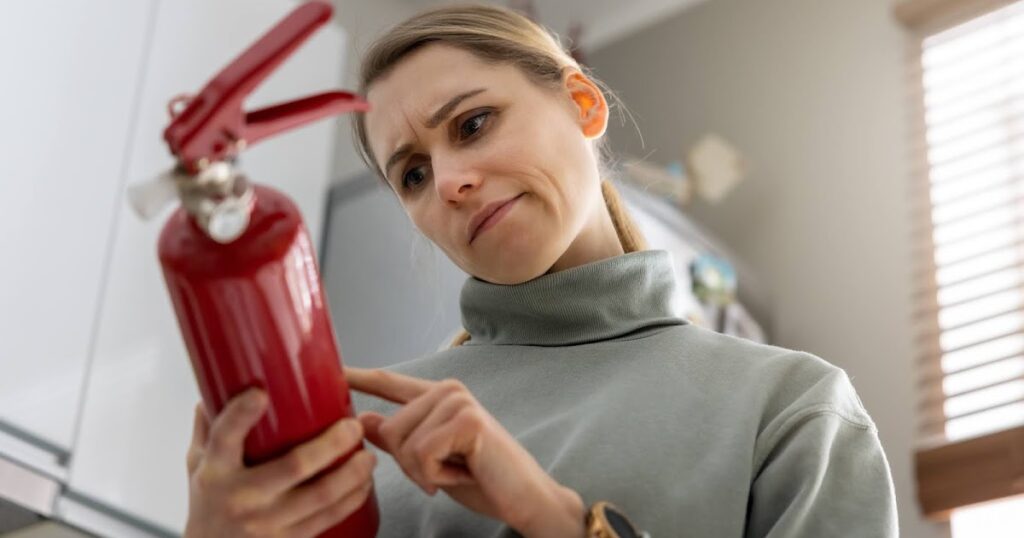How To Complete a Home Fire Extinguisher Inspection

A
fire extinguisher is something that many people don’t think about purchasing
until it’s too late. Unfortunately, just having a fire extinguisher in your home
isn’t enough to guarantee it will be useful should you ever need it. Fire extinguishers should be checked regularly
to make sure that they are ready for use. Continue reading to learn more about
how to complete a proper fire extinguisher inspection.
Ensure
Accessibility
During
a fire, every second counts, and a fire extinguisher is no good to you if you
aren’t able to find it. It’s important to make sure your fire extinguisher is
in a visible, unobstructed and designated location. You’ll also want to make
sure that the instructions on the nameplate are legible and facing outward. Pro-tip:
be sure to keep at least one fire extinguisher on each floor of your home.
Check
Your Pressure Gauge
Most
fire extinguishers have a pressure gauge that indicates whether or not the
device is in the proper range for operating. You’ll want to check and make sure your fire
extinguisher needle indicates the proper pressure. You might notice that your
fire extinguisher has a test marker. You can use this by pressing down and
looking to see if the pressure reading is as it should be.
Look
For External Damage
External
damage may indicate that your fire extinguisher no longer works and needs to be
replaced. Be sure to check the can,
hoses, and nozzle for visible signs of damage, like dents or rust for
example. Make sure the pull-pin is not missing and the pull-pin seal is intact.
Clean
and Shake
Be
sure to check the outside of the extinguisher for things like corrosion,
leakage, dents, oil, or grease, and clean as needed. In addition to cleaning, the U.S. Fire
Administration (USFA) recommends that you check your fire extinguisher for
maintenance instructions. Some extinguishers need to
be shaken monthly and/or pressure tested every few years. It’s important to
note that on average fire extinguishers are good for five to fifteen years and
will typically list an expiration date on the can.
Date
the Maintenance Tag
The
next-to-last step in your monthly fire extinguisher inspection is to date the paper
maintenance tag. This will allow you to look back and know with certainty when
your extinguisher was last checked.
Schedule
Your Yearly Maintenance Inspection
It’s
important to know that annual fire extinguisher maintenance inspections should
be performed by a professional fire protection company. Companies like these
will have the proper tools and training to ensure optimal
compliance. They will also be able to recognize and correct potentially
hazardous defects. If you need additional resources, you might consider
reaching out to your local fire department for advice.
At
NYCM Insurance, we know that protecting your home is a top priority. For more
information about a home insurance policy with NYCM, check out the
link below and speak with one of our trusted agents.



